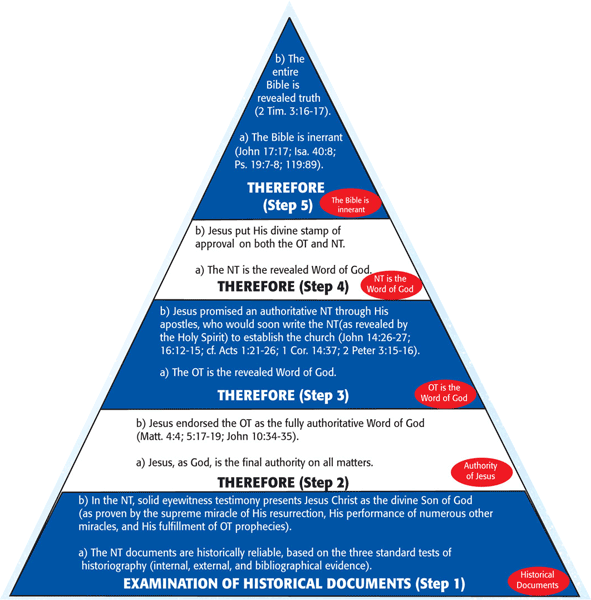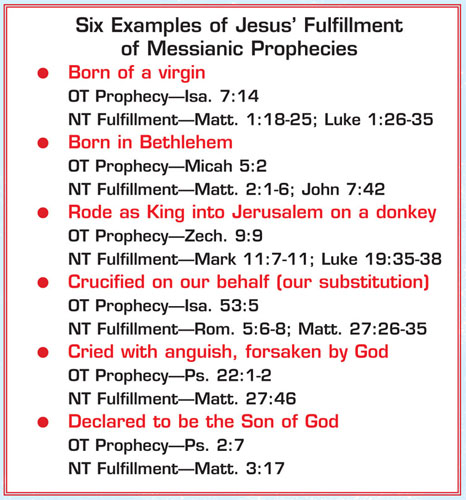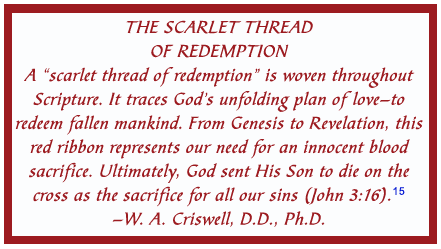 Brochure contents posted with permission by TRUE-WAY TRACTS®. Thank You! Eight Major Evidences Identifying the Bible as the Infallible Word of God  The question of whether the Bible is divinely inspired
is of utmost importance to everyone. If the Bible is not
the very Word of God, then the Christian faith is in vain.
However, if the Bible is the Word of God to mankind, it
reveals truth about God, life, death, and eternity.
Historians agree as to the genuineness of both Old and
New Testament writings. So the viable question is: Is
the Bible infallible (divinely inspired by God in its
entirety) and therefore truthful and trustworthy?
Presented below is an overview of evidence based on the three tests of historiography used to investigate historical documents: •The Internal Test analyzes what the Bible claims about itself and whether those claims are internally consistent  The Bible consistently claims to be God’s revelation to
mankind. Some key scriptural teachings about the
Bible are: 1 It’s authoritative. Scripture is called the Word of God, the Word of truth, oracles of God, holy, pure, and perfect.  1 Infallibility of the Old Testament (OT). Jesus Christ
taught about the OT’s authority (Matt. 22:43), reliability
(Matt. 26:54), finality (Matt. 4:4, 7, 10), sufficiency (Luke
16:31), indestructibility (Matt. 5:17-18), unity (Luke
24:27, 44), clarity (Luke 24:27), historicity
(Matt. 12:40), facticity (scientifically) (Matt. 19:2-5),
inerrancy (Matt. 22:29; John 3:12; 17:17), and
infallibility (John 10:35).2 He confirmed the existence of Adam and Eve, Noah, and Jonah
(Matt. 12:40; 19:4; 24:37).
2 Infallibility of the New Testament (NT). Jesus promised His apostles the Holy Spirit would teach them and give them total remembrance of all He had taught (John 14:25-26; 16:13). This prepared them as agents of the complete and final revelation of Jesus Christ to write the NT and establish the church, which began on the Day of Pentecost.3  Documented archaeological discoveries have confirmed
much of biblical history as factual. Renowned
Jewish archaeologist Nelson Glueck wrote: “It may be
stated categorically that no archaeological discovery has
ever controverted [disputed] a biblical reference.”
4 Here
are just two of hundreds of OT and NT examples:
1 The existence of the Hittites (in the OT). A. H. Sayce, a 19th-century scholar and archaeologist, first identified the ancient Hittite people from a nonbiblical source. While their existence was disputed for years, today there are hundreds of extra-biblical references to this civilization, confirming that the Hittites described in the Bible did exist.5,6  1 Extensive manuscript evidence.
More than 24,000 manuscripts of the New Testament
exist today, of which 5,600 are the original handwritten Greek
manuscripts. In addition, there are 19,200 manuscripts in
other languages. Comparison of these numerous manuscripts,
using the art and science of textual criticism, has
established the reliability of the text as well as the integrity
of its transmission.8
2 Early church fathers’ quotations. The writings of the early Christian fathers, such as Origen and Tertullian (dated within 150 to 250 years of Jesus’ earthly life), contain prolific quotations from the New Testament. 9 Even if all other sources of knowledge about the New Testament text were destroyed, these writings “would be sufficient alone for the reconstruction of practically the entire New Testament.” 10  No other documents of antiquity are as well attested
bibliographically as the New Testament, in that:
• There are more manuscripts preserved (5,686 in Greek plus 19,284 in other languages)  1 Manuscript comparisons. The integrity of the
Hebrew Scriptures is confirmed by comparing texts
from Palestine, Syria, and Egypt. Their reliability is
further supported when compared to the Septuagint,
a complete Greek translation initiated in Egypt c. 250
BC.12
2 Confirmation by the Dead Sea Scrolls. In 1947, thousands of manuscripts were uncovered, containing portions of every book of the canonical OT except one. It included, for example, a complete manuscript of Isaiah from 100 BC (1,000 years earlier than the previously known manuscript). These two manuscripts proved to be identical in more than 95% of the text, with the 5% variation consisting mostly of slips of the pen and spelling. 13 3 Fidelity of the Jewish scribes. The Talmudists had an intricate system of transcribing synagogue scrolls, and the Masoretic scribes evidenced profound reverence for the Scriptures, following rigid rules for text transmission. For example, all of the letters were counted methodically, and if a manuscript was found to contain even one mistake, it was destroyed. 14  The Bible is one continuous story of God's redemption
of mankind through the Messiah. (See “The Scarlet
Thread” text box below.) Remarkably, the Bible
demonstrates complete harmony and unity even
though it contains 66 books, written over a span of
1,500 years by 40 authors with diverse backgrounds,
on three continents, in three languages, and covering
hundreds of subjects. Such a wonder could only be
explained by the biblical claim that the Holy Spirit was
the divine Author (2 Peter 1:21).
 The Bible is a collection of 66 separate ancient documents.
The OT books, written centuries before the NT
books, contain extensive clear and specific prophecies.
Amazingly, the NT shows historical fulfillment of hundreds
of them with 100% accuracy. For example, in the
first century AD, Jesus of Nazareth precisely fulfilled 300
OT predictions concerning the first coming of
Messiah, the Christ. And 61 of them were considered
major Messianic prophecies.20,21 Fulfilled prophecy is
indisputable evidence of the Bible’s infallibility. All
other books regarded as religious scripture contain little
if any prophecy, and none dares to claim historical
fulfillment.22
 Our Creator, who revealed His infallible Word to us,
wants us to know that His Son, the promised Messiah,
died on the cross to redeem us. Have you asked Jesus
for forgiveness and invited Him into your life as Lord
and Savior yet? He is waiting to hear from you and
give you eternal life.
Footnotes Visual Aids A Pyramid of Logic  The Bible Is Inerrant The pyramid above16 shows a logical progression of thought, building on a foundation (the NT historicity) and moving upward. Based on accepted principles of textual and historical analysis, the NT documents are reliable sources of information from the first century. They contain primary-source evidence for the life of Christ.17,18 (“Inerrant” means errorless in the original autographs. Thereafter, the NT has survived in more manuscripts and in purer form than any other book from antiquity.)19  *Using the modern science of probability, the chance of just eight of these prophecies being fulfilled by one person would be 1 in 1017 (a 1 followed by 17 zeros). The chance that any one man could fulfill even 48 of them would be 1 in 10157. Thus coincidence is entirely ruled out.23 |

Register
Reading
Plan Creator
Join us weekly!
Testimonies
YouTube Videos
About The Bible
The Ultimate Gift
Blog
Give

| Copyright 2025 TheBibleTeam.com All Rights Reserved |
